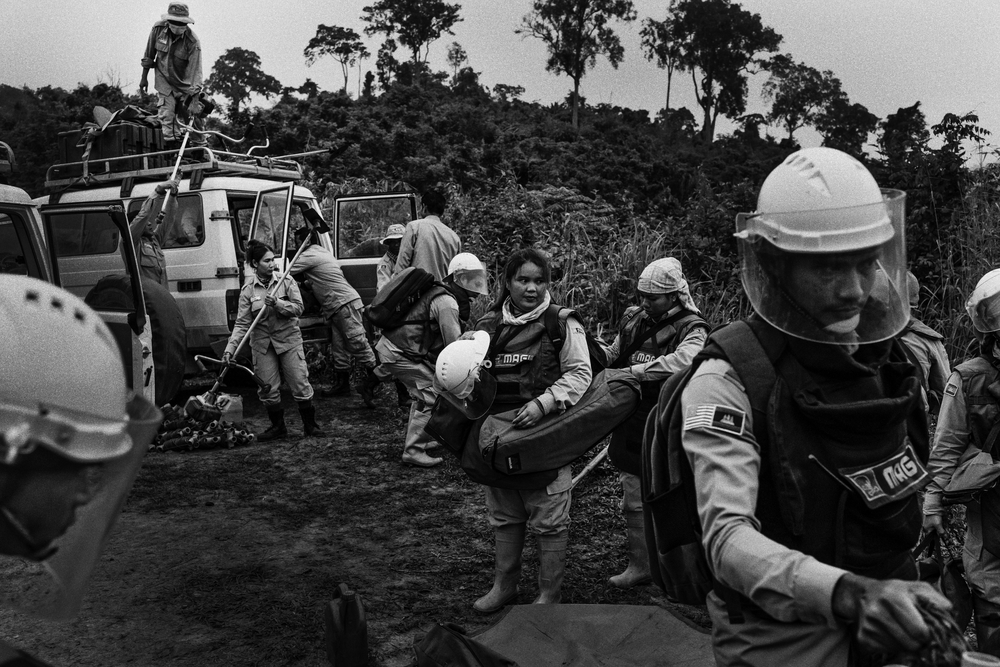The first bombs fell on Kyiv a year ago today. But just 365 days later, it is already clear that landmines and unexploded ordnance will threaten and endanger the lives of Ukrainian people for years to come.
At MAG, we know from our work on the ground that such long-term contamination is just one of the legacies of war once the guns have fallen silent. As at least 60 million people worldwide who are still living at risk of landmines can attest, these and other explosive ordnance often lurk in the ground long after the armies and tanks have gone.
A different conflict, on the other side of the world, tells the same story.
The last bombs fell on Laos, in South-East Asia, almost exactly 50 years ago. Yet, to this day, it remains one of the most badly affected places in the world for unexploded ordnance. Children are still injured and killed by cluster munitions fired long before their parents were even born but which continue to litter their villages and paddy fields.
It’s a similar story for many countries that have experienced conflict. In countries like Angola, Vietnam, Cambodia and Iraq, wars that ended decades ago continue to cost lives and limbs.
And the aftermath of conflict is about more than the grave and personal tragedy of death and disability.
Contamination caused by explosive ordnance and landmines seriously hampers development, economic growth and food security, as well as impeding access to education and healthcare – all of which are vital to supporting countries to achieve stability and lasting peace.
In Sinjar, Iraq, displaced Yazidi families are unable to return home because their villages are still contaminated with the improvised landmines left behind by Islamic State. In eastern Iraq, close to the Iranian border, farmers are prevented from accessing their land because of landmines planted during the Iran-Iraq war, a conflict that ended almost 30 years ago.
In Cambodia, I recently met families who are among the poorest in the world and who depend on subsistence farming to feed their children. But the minefields, including so-called ‘nuisance minefields’ – where the landmines were laid in a haphazard and entirely unpredictable manner – mean they cannot plant the rice, cashew nuts, or cassava they need to thrive.

One of MAG's team in Cambodia.
In Lebanon, the crippling financial crisis, coupled with the food shortages caused by the war in Ukraine, means formerly contaminated agricultural land is often planted with crops within days of clearance. According to a 2019 report by the United Nations Development Programme (UNDP) and Lebanese Mine Action Centre, every dollar spent on mine action in Lebanon generates an economic return of $4.15.
The hard lesson we must learn from countries where contamination has lingered for decades is that the international community must mobilise more resources, more quickly, and with a long-term commitment, to address contamination as soon as possible. Without a well-coordinated, focused and sustainable effort to remove explosive remnants of the conflict in Ukraine, its people will be unable to return to their homes, communities and farms in safety for generations.
We are already seeing very welcome focus on addressing contamination in Ukraine, with early commitments from the UK and other international donors such as the US enabling risk education, survey and clearance to be carried out where it is safe to do so.
We must build on this momentum, for the sake not only of the people of Ukraine, but for people in every other country still suffering the after-effects of conflict – regardless of whether the wars that contaminated their lands still make the daily headlines or not.
This article was originally published by the Coalition for Global Prosperity.
More about our work in Ukraine here.





